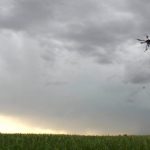 July 16, 2021 10:12 am
Published by Climate Extremes
July 16, 2021 10:12 am
Published by Climate Extremes
The overarching goal of the Colorado State University Convective CLoud Outflows and UpDrafts Experiment (C3LOUD-Ex) was to enhance our understanding of deep convective storm processes and how they are represented in numerical models. Pivotal to the experiment was a novel “Flying Curtain” strategy.
 April 26, 2021 1:21 pm
Published by Jenny Rislund
April 26, 2021 1:21 pm
Published by Jenny Rislund
This project will explore the characteristics of the linear systems -- size, orientation, propagation - that lead to the most extreme rainfall events.
 March 30, 2021 10:32 am
Published by Jenny Rislund
March 30, 2021 10:32 am
Published by Jenny Rislund
The accumulation of rainfall over a given area depends on a range of things, including duration, intensity, and propagation speed. It is the characteristics of convection that ultimately determine these rainfall properties. The idea for this project is to use a simple method to characterise the properties of the most intense convective / rainfall bearing systems from radar data.
 July 3, 2020 3:53 pm
Published by Climate Extremes
July 3, 2020 3:53 pm
Published by Climate Extremes
A new paper by Martin Jucker and colleagues reveals the choice of a particular convection-resolving model (CRM) has a much larger impact on the results than increasing resolution. It also suggests the behaviour of CRMs is tied to model internals instead of the phenomena they are trying to reproduce.
 April 15, 2020 1:51 pm
Published by Climate Extremes
April 15, 2020 1:51 pm
Published by Climate Extremes
To better assess the degree of organisation in radar observations CLEX researchers developed the Radar Organisation Metric (ROME). ROME's statistical properties suggest it is able to distinguish between the degree of convective organisation, and it also captures different regimes of the monsoon in Northern Australia.
 November 25, 2019 12:46 pm
Published by Climate Extremes
November 25, 2019 12:46 pm
Published by Climate Extremes
This study found in CMIP5 models that are able to simulate both types of events, that convective extremes do not always coincide with warm extremes. The disassociation becomes more distinct under greenhouse warming with higher occurrences of convective extremes than warm extremes.
 November 25, 2019 12:15 pm
Published by Climate Extremes
November 25, 2019 12:15 pm
Published by Climate Extremes
This paper investigates the annual cycle in cloud and rainfall measurements over the western equatorial Indian Ocean. While there is a single period of strong rainfall over the region during December-January each year, there are two periods of increased high-top clouds associated with convection.
 September 30, 2019 9:19 am
Published by Climate Extremes
September 30, 2019 9:19 am
Published by Climate Extremes
This project analyzes satellite images and other observational data to study two-way interactions between convection and tropospheric waves. In particular, it investigates how these interactions influence patterns of
convection and clouds. Numerical experiments in the form of high-resolution simulations are designed to support the results.
June 24, 2019 11:53 am
Published by Climate Extremes
John Allen (Central Michigan University). Global Perspectives on Severe Convective Storms
 June 6, 2019 12:32 pm
Published by Climate Extremes
June 6, 2019 12:32 pm
Published by Climate Extremes
This observational study of radiative convective equilibrium finds that this equilibrium breaks down in areas of a few thousands kilometres on a side. This has implications cloud model simulations in climate models.









